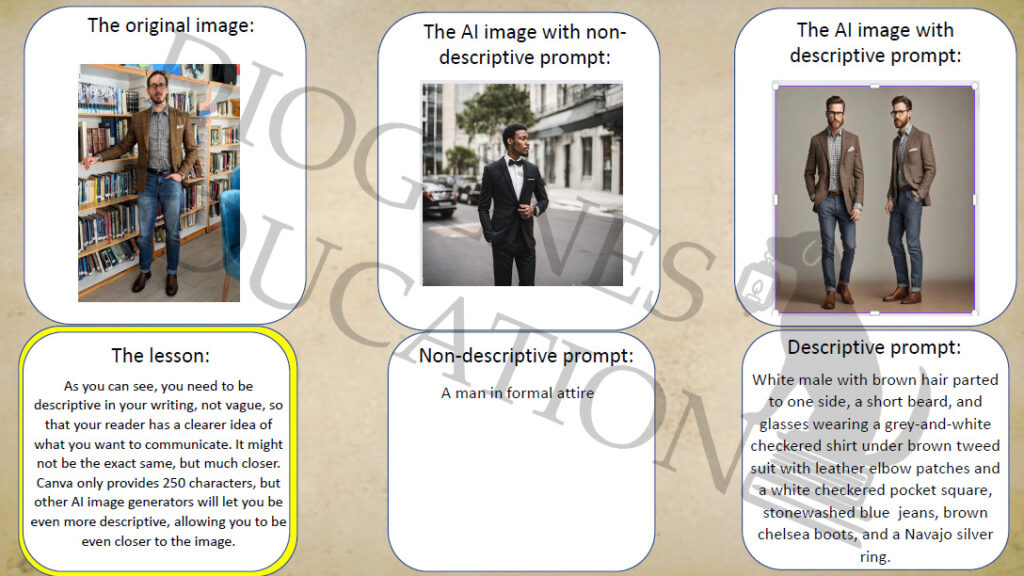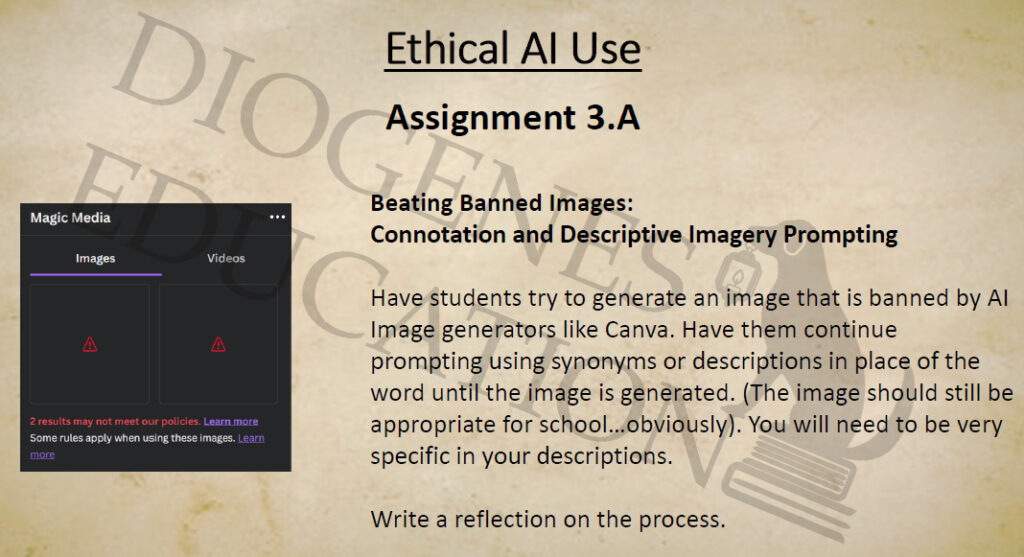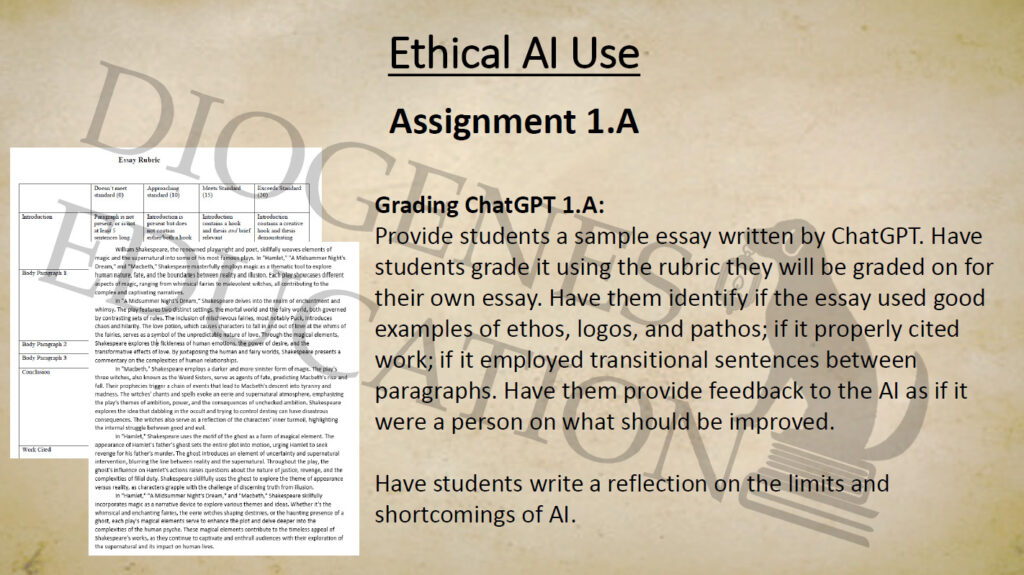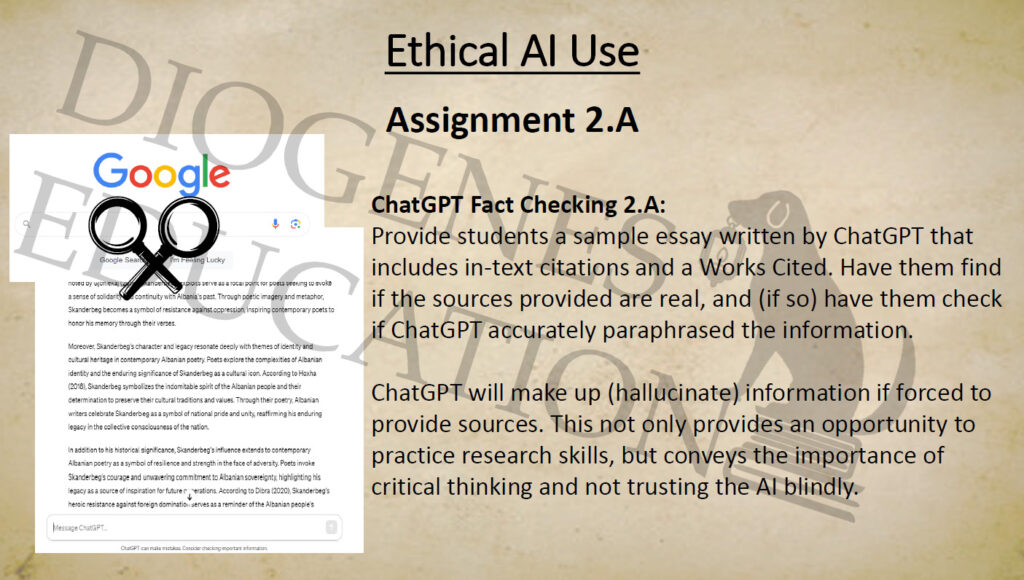Top 10 Ways to Use AI in the Classroom: Beyond ChatGPT
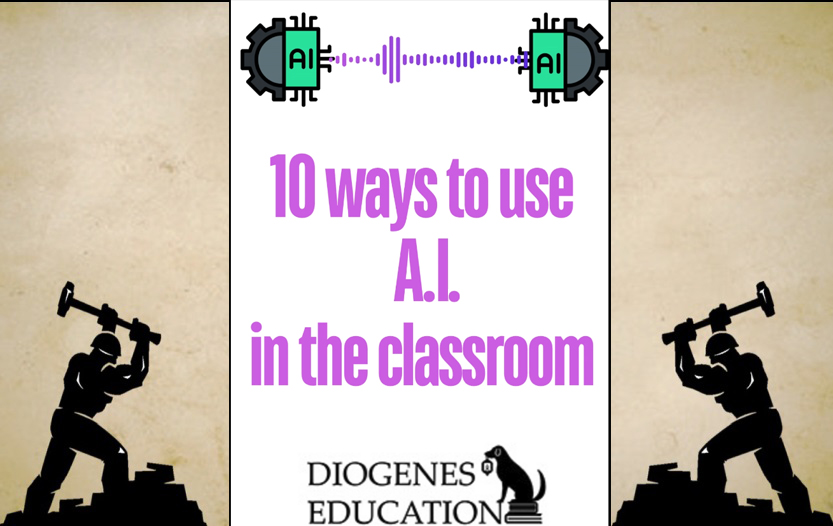
Despite my concerns with allowing young learners to use A.I. before they’ve developed strong foundational skills (as I’ve previously posted about here), there are ways you can utilize A.I. like ChatGPT, Dall-E, InVideo, and more as part of the process, rather than the product, in learning activities. Here are 10 ways you can use A.I. in the classroom to actually teach students in English classes. This list was generated using activities that can be found in the Ethical A.I Lessons and Classroom Activities unit.
10. Teach Descriptive Language with Prompt Engineering and AI Image Generators
Teach the importance of descriptive language and imagery by having students describe an image using Canva’s Magic Studio. Unlike Dall-E, ChatGPT’s image creator studio, Canva provides 30-some images for free. Students will have to learn to be specific, not vague, when they write. Present an image and have students continually re-write a prompt until it generates a similar image. Have students reflect on the process and why key words or adjectives did or did not work.
09. Teach Connotation and Denotation with Canva Magic Studio
It is well known that ChatGPT won’t allow certain images to be made based on certain prompts; however, students can get around these, and you can make that the goal of a lesson on connotation and denotation. You can differentiate the previous lesson to be more advanced to be based on connotation and denotation. In my class’s unit on Dante’s Inferno, students created their own ironic punishments and created an image based on their description using A.I. While it wouldn’t make a ghastly “prison out of flesh”, it did make a “man trapped in a room made out of meat”. Students write a reflection about the nuances in meaning between the “banned” words in the prompt and the “allowed” words that successfully generated the image.
08. Grade a ChatGPT Essay
Allow students the opportunity to read a ChatGPT-produced essay and have them grade it with the rubric you will be using to grade their own essays. Does the AI essay earn an A? Students will discover A.I. is a great tool (for being mediocre) and that to get top marks they’ll have to outperform AI and write on their own merits. You can teach the best way to write an essay without AI with this Essay Writing Unit.
07. Fact Check an A.I. Report
Students will learn about Large Language Models tendency to “hallucinate” and make up sources. Have students perform a source analysis and try to find the source provided by ChatGPT (and if they can’t find it, can they verify the information from another, more primary, source?). This activity helps students learn media literacy through learning primary vs secondary sources and the importance of fact-checking what they read.
06. Figurative vs Literal Language with Dall-E
Test your students’ abilities to understand subtext and metaphorical meaning by having them write a short poetic prompt using figurative language into an AI image generator. Students will swap the resulting image and try to guess what prompt was given to generate an image by writing their own prompt describing the image, resulting in a second image. The students then write collaboratively and analyze why the computer interpreted certain figures of speech in the way it did. Does AI Understand Poetry?
05. Diagnose AI-generated Video for Signs of AI Using InVideo
InVideo created a new text-to-video AI program that does exactly what it says. This means AI isn’t just making writing or images, but a full video based on a one-sentence prompt. YouTube and Social Media are already filling up with auto-generated content. How will students know whether a person made them, or if it’s just fake news? Have them watch short “documentaries” like the four included in this Ethical AI Unit to not only fact check and research them, but to diagnose signs of AI usage (such as jittery and blurred edges, strange light artifacts, and other tell-tale signs).
04. Teach the Repercussions of Plagiarism

Plagiarism can end a student’s academic career, and cheating later in life can have serious repercussions. Discuss the issues about using ChatGPT instead of their own writing and how it could affect their life. Use examples ranging from students kicked out of college, to musicians sued for stealing melodies in their songs. Teach students they need to always cite their work, especially if they use ChatGPT.
03. Teach Them to be Skeptical of AI by Teaching What It Actually Is
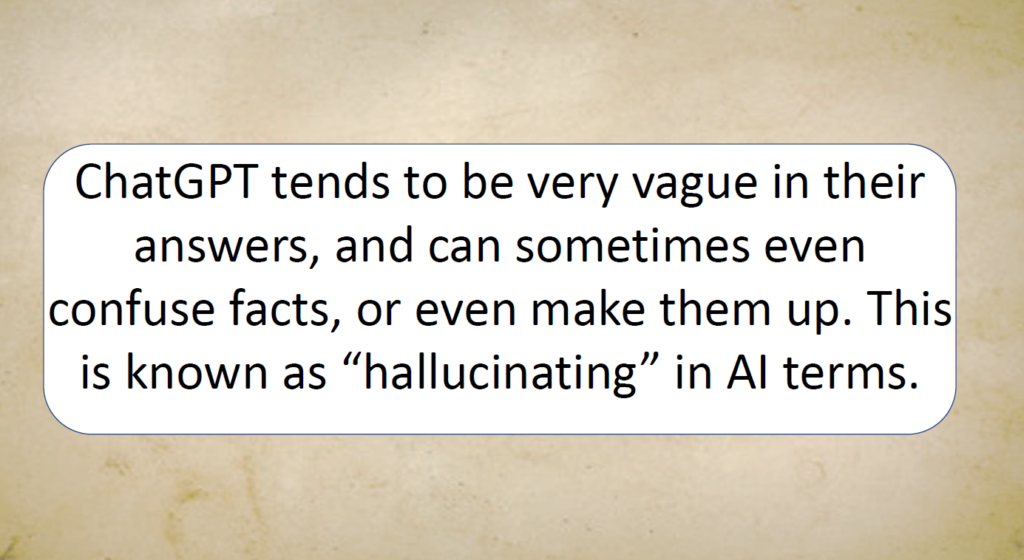
Perhaps no greater damage has been done to the next generation than that which was done by naming Large Language Models like ChatGPT as Artificial Intelligence. They are not. Teach them about how they are advanced versions of predictive text answering the statistically likely next word, not thinking of deep answers. Teach them terms like “hallucinating” and what that means in the context of our new AI-world. Teach them to be skeptical of AI. It is a tool to use, not an idol of knowledge to blindly put their faith in.
02. Teach the Importance of the Human Spirit
This one may sound a little more spiritual and less empirical, but discuss what art and human creativity are–and why they have value. Teach the value of learning to do a task by oneself and the value of independence. School is not just teaching kids how to read and write and do math, but to be autonomous beings.
01. Teach Your Own Lesson

The best way to use AI In the classroom is the way that works best for your students and has your own unique fingerprints as a teacher and a human being. Take any of the ideas presented here and find a way to make them into your own!
Get Started with AI Units in Your Classroom
Artificial Intelligence AI ChatGPT Research, Descriptive and Figurative Language
Artificial Intelligence Plagiarism detection: ChatGPT Quillbot teacher training
Brave New World: Technology, Dystopias, powerpoints, handouts, and assessments
Get a FREE SAMPLE of our lessons at our online store


